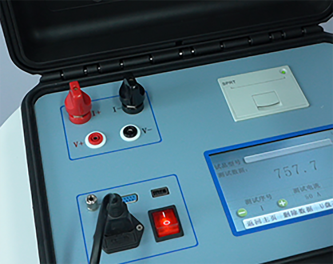 English
English


hipot wire testing
Understanding Hipot Wire Testing Importance and Procedures
Hipot wire testing, or high-potential testing, is an essential procedure used to ensure the safety and reliability of electrical devices and components. This test evaluates the insulation integrity of wire and cable assemblies by applying a high voltage, thereby ensuring that the wire can withstand operating conditions without breaking down. The key objective of hipot testing is to identify any potential insulation weaknesses that could lead to electrical failures, which could be dangerous in practical applications.
The Importance of Hipot Wire Testing
The primary purpose of hipot testing is to safeguard against electrical shock hazards and equipment failures. In various industries, including manufacturing, automotive, and electronics, the failure of electrical insulation can lead to catastrophic consequences, such as fires, equipment damage, or personal injury. By subjecting wires and cables to high-voltage stress during the testing process, manufacturers can detect flaws in insulation materials and address them before products are deployed into the field.
Moreover, with stringent global safety standards and regulations governing electrical products, companies are obliged to conduct thorough testing procedures. Compliance with standards established by organizations such as Underwriters Laboratories (UL) and the International Electrotechnical Commission (IEC) not only ensures product safety but also enhances consumer trust and brand reputation.
Procedure of Hipot Wire Testing
The hipot testing process typically involves the following steps
hipot wire testing

1. Preparation Before testing, it's crucial to ensure that the devices are de-energized and disconnected from power sources. All external components that might interfere with the test need to be removed.
2. Equipment Setup A hipot tester is employed, which is specifically designed for this purpose. The device generates a high voltage across the wire under test and monitors leakage current.
3. Test Execution The tester applies a voltage level that is higher than the normal operating voltage of the device for a specified duration, usually ranging from one to five minutes. This high-voltage condition allows the tester to assess the insulation's ability to withstand electrical stress.
4. Monitoring Results During the test, the leakage current is measured. A low leakage current indicates good insulation integrity, while a high leakage current suggests the presence of defects, such as pinholes or cracks in the insulation. If the current exceeds predetermined limits, the wire or cable fails the test.
5. Documentation After testing, results are documented for review and compliance purposes. This documentation also serves as a basis for quality assurance and future reference.
Conclusion
In conclusion, hipot wire testing is a critical procedure in ensuring the safety and reliability of electrical components. As technology advances and electrical systems become more complex, the necessity for robust testing practices becomes increasingly important. Regular hipot testing not only helps in preventing electrical failures but also plays a vital role in maintaining industry standards and protecting end-users from potential hazards. By adhering to proper testing protocols, manufacturers can contribute to safer electrical products and foster a culture of safety within their organizations.
-
Differences between open cup flash point tester and closed cup flash point testerNewsOct.31,2024
-
The Reliable Load Tap ChangerNewsOct.23,2024
-
The Essential Guide to Hipot TestersNewsOct.23,2024
-
The Digital Insulation TesterNewsOct.23,2024
-
The Best Earth Loop Impedance Tester for SaleNewsOct.23,2024
-
Tan Delta Tester--The Essential Tool for Electrical Insulation TestingNewsOct.23,2024





